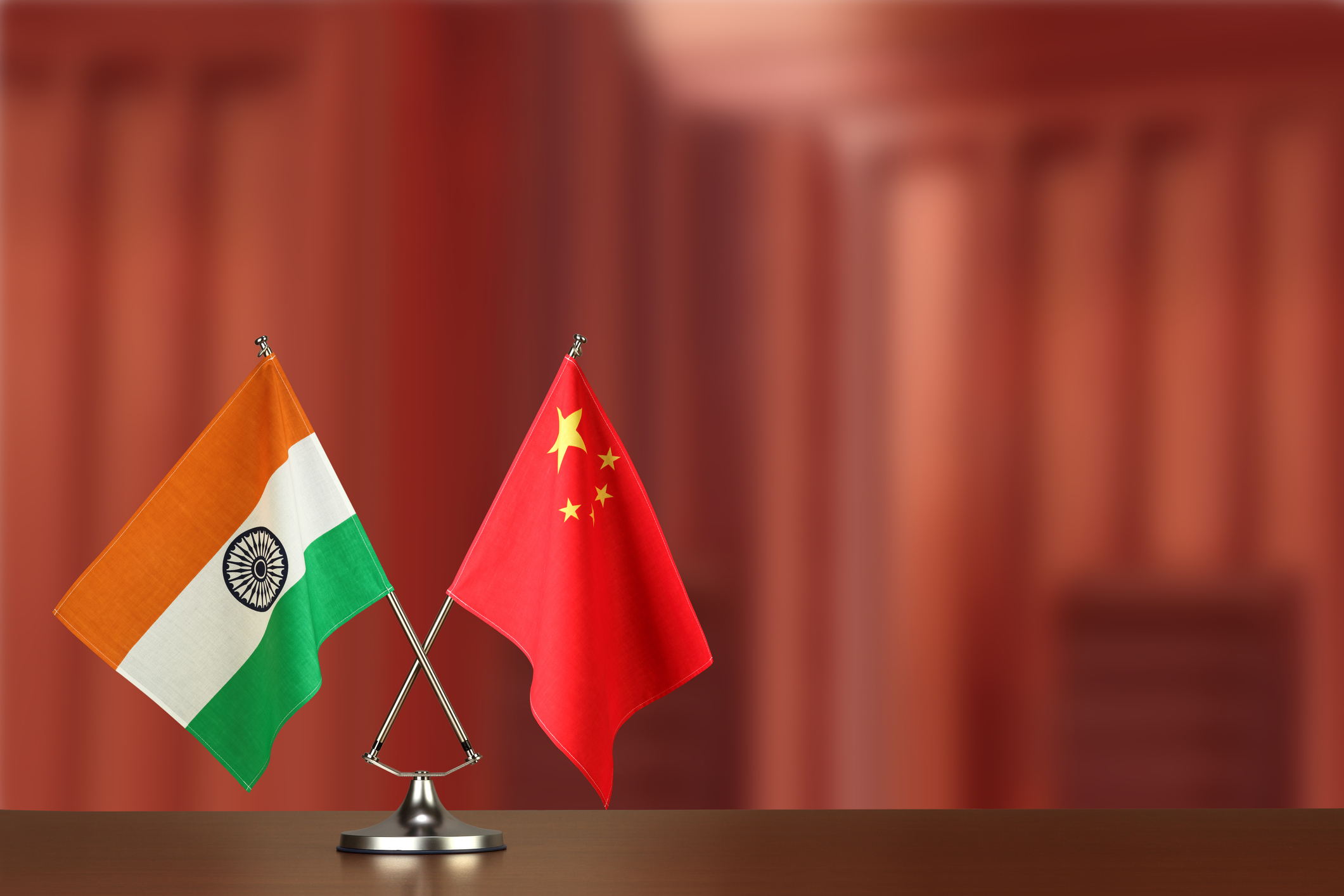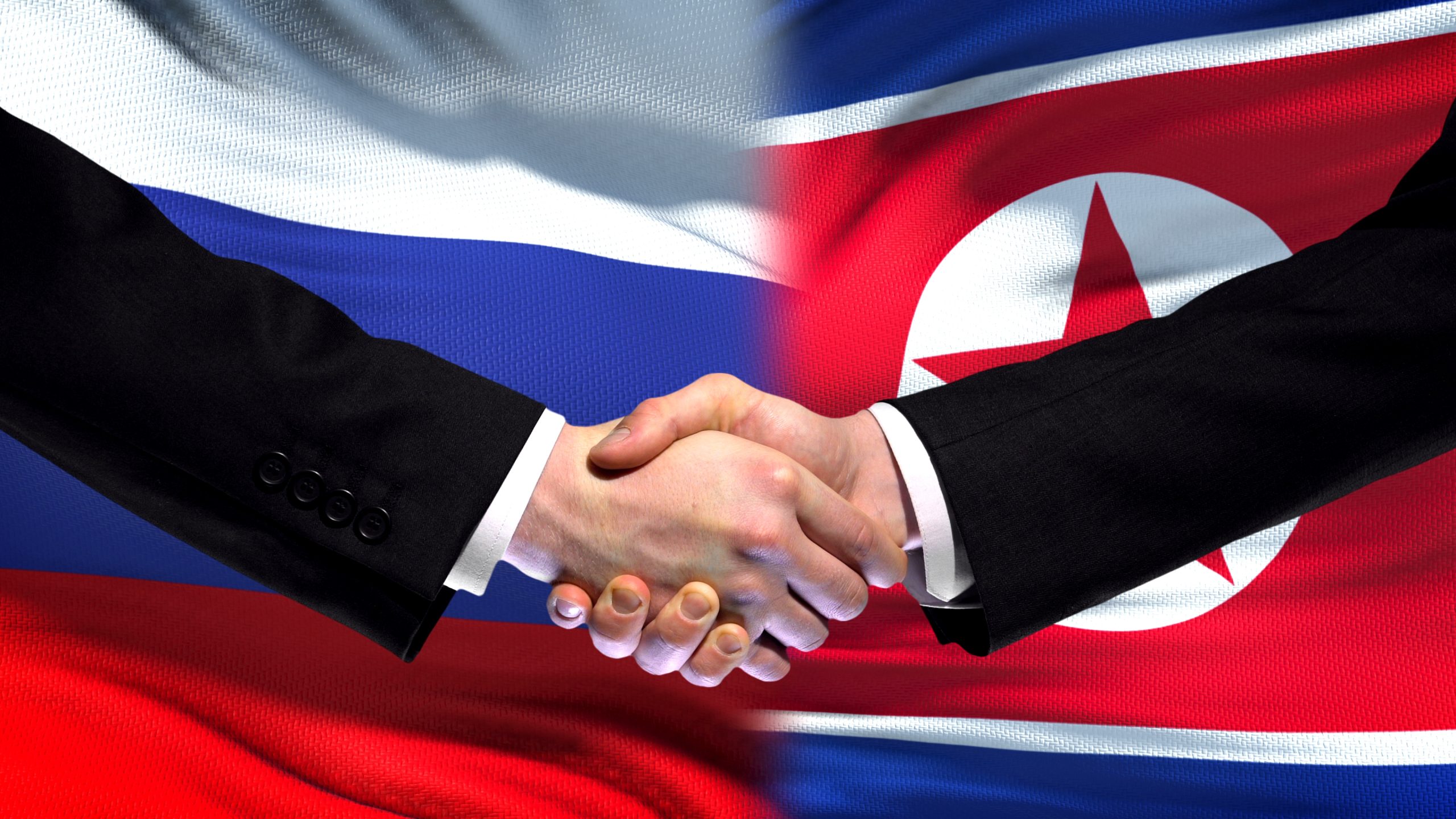
The Belt and Road Initiative (BRI) in Southern Asia
Fri, 25 Sep 2020 | Reading Time: 12 minutes

Background
Since the Belt and Road Initiative (BRI) began in 2013,126 countries and 56 international organisations across Asia, the Middle East, Europe, Africa and South America have signed cooperation agreements with China. This multi-faceted project includes infrastructure connectivity projects, investment and trade cooperation, financial integration, cultural exchange, and regional cooperation. The massive scope of BRI is said to represent the 4.4billion people (70 percent of the world population) and the cumulative gross domestic product (GDP) of around $21 trillion. The gigantic cost of the BRI could reach $1.2–1.3trillion by 2027.
South Asia is covered by three major undertakings of BRI – China Myanmar Economic Corridor (CMEC), the ChinaNepal Economic Corridor (CNEC that also includes Nepal China Trans Himalayan Multi-dimensional Connectivity Network including Nepal-China cross border railway,) and China-Pakistan Economic Corridor (CPEC). Of the BRI projects across the Himalayas, CPEC is the flagship project, connecting Kashgar in China’s Xinjiang Province over Khunjerab Pass with Gwadar Port in Pakistan on the Arabian Sea. Citing “sovereignty” concerns, India has taken a principled stand and not participated in the BRI, as CPEC passes through Pakistan Occupied Kashmir (PoK) and Gilgit-Baltistan (GB). The 2800 km Bangladesh China India Myanmar (BCIM) corridor proposed to link Kunming in China’s Yunnan province with Kolkata, passing through nodes such as Mandalay in Myanmar and Dhaka in Bangladesh. However, In May 2019 after the meeting of the 2nd Belt and Road Forum, the BCIM was not mentioned in a list of 35 corridors and projects..
In August 2020, China’s foreign minister Wang Yi had a virtual meeting with his counterparts of Afghanistan, Nepal and Pakistan, to forge “four-party cooperation” to overcome the Covid-19 crisis and continue work on projects under the Belt and Road Initiative (BRI), including the China-Pakistan Economic Corridor (CPEC).
The CPEC
The CPEC is the flagship of BRI that goes to the long-term deep rooted relationship between China and Pakistan. The projects are being pursued with immense vigour, despite the serious financial situation that Pakistan is in, and the poor likelihood that it will be able to service the loans it is getting from Chinese financial institutions. Much has been written about CPEC, the immense effect that it will have on the debt burden on Pakistan, though in Pakistan it is branded as a ‘game changer’. The projects under CPEC are of four types – Energy Projects, Infrastructure Projects, Gwadar related Projects and Industrial Cooperation. It has been estimated that besides creating two million new employment opportunities, Pakistan would benefit with at least two percent increase in its GDP per annum, and develop a wider regional connectivity. The focus of CPEC is to connect Xinjiang, China with the Chinese-invested Pakistani port of Gwadar through highway, rail and pipeline infrastructure. The CPEC projects in Gilgit-Baltistan (GB) and Pakistan Occupied Kashmir (POK), which is legally Indian territory, are of immense concern to India.
On the infrastructural front, Pakistan’s National Highway 35 (N35) passes through GB). More than 400 kilometres of this CPEC route passes through Gilgit – Baltistan (GB), starting near the China border in Sost Dry Port to the Basha area at the periphery of the boundary with the Khyber Pakhtunkhwa (KP) province. The plan is to reconstruct and upgrade works which form the Pakistani portion of the Karakoram Highway (KKH). The KKH spans 887km between the China-Pakistan border and the town of Burhan, near Hasan Abdal. The 175 kilometre road between Gilgit and Skardu will be simultaneously upgraded to a 4-lane road at a cost of $475 million to provide direct access to Skardu from the N-35. Construction is expected to be completed at a cost of approximately $1.26 billion with 90% of funding to come from China’s EXIM bank in the form of low interest rate concessional loans.
In the POK, 200km long Mansehra-Muzaffarabad-Mirpur-Mangla Expressway (named as M4) plans to connect Muzaffarabad, the capital of POK, with the Grand Trunk (GT) Road through Mangla and Mirpur. A long term project under CPEC involves construction of the 682km long Khunjerab Railway line between of Havelian and Khunjerab Pass, with extension to China’s Lanxin Railway (Southern Xinjiang Railway) in Kashgar, Xinjiang. This railway will be roughly parallel to KKH, and is expected to be completed by 2030.
Between Thakot and Raikot plans are underway to construct several hydropower projects, most notably the Diamer-Bhasha Dam and Dasu Dam. Sections of the N-35 around these projects will be completely rebuilt in tandem with dam construction. A series of energy projects are being planned in POK and GB, and in Punjab, Sindh and Balochistan. It is home to two big power projects – Mangla and Neelum-Jhelum, which together produce over 2,000MW of electricity. The Kohala Hydropower Project on the Jhelum River, upstream of Domel has been planned at an estimated cost of $2.5 billion. Construction work on the Kohala project has remained suspended since December 2018 due to the public concern over its ecological impact. A 100MW hydropower project near Karakoram International University in Gilgit, and an 80MW hydropower project in Phander area of Ghizer are other such projects in the region.
Similarly a fibre optical cable project covers an area of 820 km and will provide the ICT infrastructure for 3G/4G services between the Khunjerab Pass on the China-Pakistan border and the city of Rawalpindi. It has been constructed as part of the CPEC at an estimated cost of $44 million.
GB has large mineral deposits in, including metallic, non-metallic, energy minerals, precious and dimension stones, and rocks of differing industrial value. Mining is dominated by corporations mainly from China. In terms of value, annual extraction of gemstones from GB is worth around $3 million. Local communities have claimed that the Pakistan Government awards licences secretly to ghost companies either operating on behalf of the Pakistan Army or the Chinese. Pakistan has illegally awarded more than 2000 leases in GB for the mining of gold, uranium and molybdenum (which is used in space technology) to China. Chinese companies and labour are everywhere in GB, especially in the Hunza-Nagar district, which is rich in uranium. Far more serious is the creation of ‘no-go’ areas by the Chinese, who prevent locals from accessing these areas. This is apparent in some areas in upper Hunza, like Chapursan Valley, where the Chinese have done both tunnel building and mineral exploration. Chinese has also leased areas in Astore district to extract high quality copper.
China is a world leader in establishing SEZs, by 2017 having established and managing 77 SEZs in 36 countries. SEZ development has been adopted energetically at the heart of the Belt and Road Initiative (BRI). Two Special Economic Zones (SEZ) are planned in POK and GB. A mixed industry SEZ is to be established at Mirpur over 1,078 acres. It is situated 22km from GT Road Dina-Jhelum and 140km from Sialkot. It would be connected to the main CPEC route via M4. The planned SEZ is 5 Km from the proposed Dry Port at Mirpur with a railway link between Dina, Jhelum and Mirpur is being established. Special incentives have been offered by the POK government for investment in the Mirpur economic zone.
Moqpandass Heavy Industry SEZ in GB is planned 35km from Gilgit and 160km from Skardu, occupying 750 acres. It is located 200km from Sust Dry Port enroute to Khunjerab Pass. It is planned to have industries for granite/marble, iron ore processing, fruit processing, steel industry, mineral processing unit and leather industry. Co-located will also be Gilgit Hydropower station generating 100MW.
It is important to mention Gwadar Port. Gwadar Port Authority (GPA) chairman, Naseer Khan Kashani had asserted, “If the Gwadar Port works, CPEC will work, and if CPEC works, BRI will work.” Gwadar Port is key in helping realize the success of BRI and global trade. According to the U.S. Energy Information Administration, the port achieved a record of 18.5 million barrels per day of sea-borne oil shipped through it in 2016, and a 9 percent surge on flows in 2015, and which made up 30 percent of all sea-borne traded crude oil and other liquids during the year. The flow of sea-borne crude and condensate passing through the Strait reached around 17.2 million bpd in 2017 and around 17.4 million bpd in the first half of 2018. Gwadar will soon be able to handle about one million tons of cargo annually. Officials believe that with the expansion plans that are under way the port will become South Asia’s biggest shipping center within five years, with a yearly capacity of handling 13-million tons of cargo. Then by 2030, it is said that it will be capable of handling up to 400-million tons of cargo annually. However all is not smooth for the port, the people of Balochistan have been agitating against it. As an example when Gwadar was facing power outages, the Government of Balochistan took more than three years to approve construction on the Gwadar power project.
The China-Nepal Economic Corridor (CNEC) or Trans Himalayan Economic Corridor
China is developing the China-Nepal Economic Corridor (CNEC) which will link Tibet to Nepal. The visit of President Xi Jinping to Nepal in 2019, was preceded by the visits of Nepal PM to China in June 2018, and President of Nepal to attend the Second Belt and Road Initiative (BRI) Forum in Beijing on 27 April 2019. President Xi Jinping signed of 18 Memorandum of Understanding (MoU) and two Letters of Intent that elevated bilateral ties from comprehensive partnership to strategic partnership. Major infrastructural projects fall under the Nepal China Trans Himalayan Multi-dimensional Connectivity Network. The 72km Kerung-Kathmandu railway corridor will get a detailed project report in the next two years. This rail link will finally connect Kerung to Lumbini. There are motorable roads from the Chinese border to Hilsa, Korala, Rasuwa, Kodari, and many more are being added. The Protocol of Transit Transport Agreement with China with Nepal signed in Sep 2018, will now enable Nepal to access Chinese sea and land ports, trying to end Nepal’s dependence solely on Indian ports for goods and trade.
China has also agreed to let Nepal use Tianjin, Shenzhen, Lianyungang and Zhanjiang open seaports and Lanzhou, Lhasa and Xigatse dry ports for trading with third countries. There was a commitment of US$ 500 million in the next two years for capacity development and uplifting basic living standards in Nepal. The relationship between the two communist parties would be further strengthened as a fraternal relationship was established between the Communist Party of China and Nepal Communist Party with the signing of six MoU. The Confucius Study Centres are bound to proliferate language training to Nepal. The roads, the optical fibre network, the burgeoning trade and increasing people to people contact are pointers to a new geo-political architecture between China and Nepal.
China Myanmar Economic Corridor (CMEC)
The CMEC to the Bay of Bengal is the replica of the China-Pakistan Economic Corridor (CPEC). China’s President Xi Jinping visited Myanmar to mark the 70th anniversary of the establishment of diplomatic relations between China and Myanmar in January 2020.The visit of President focused on the three pillars of the China Myanmar Economic Corridor (CMEC)— the Kyaukpyu Special Economic Zone, the China-Myanmar Border Economic Cooperation Zone and the New Yangon City. There are also proposals for the construction of a railway line from between China’s southwestern province of Yunnan and the Bay of Bengal. The railway will connect Kyaukpyu on the western seaboard of Myanmar and Yangon in the south where the Irrawaddy River flows into the Bay of Bengal.
However there have been serious differences between Myanmar and China. In 2018, Myanmar amended its ownership agreement with China for the crucial deep-water port at Kyaukphyu from a 15% stake to 30% for Myanmar and cut project costs by 80%.
Extension of CPEC to Afghanistan
The Chinese assistance to Afghanistan has not been substantial. Hence, as the United States begins a final drawdown of their forces from Afghanistan, China is expanding its role and influence. The second phase of CPEC would focus on Afghanistan as the US prepares to withdraw from the region. China having major investment of billions of dollars in Pakistan is keen to expand the initiative to mineral-rich Afghanistan. For that China is actively enhancing contacts and possibly building robust relations with the Afghan government and the Taliban, pushing for reconciliation between Pakistan and Afghanistan. One major initiative is the ‘Five-nations railway’ linking China, Iran, Kyrgyzstan, Afghanistan, and Tajikistan, with routes also connecting Afghanistan to Pakistan. However the CPEC would be the most efficient way to integrate Afghanistan into the BRI, providing Afghanistan the most direct access to the sea via Pakistan.
The China-Iran deal will also play a vital role in this region in the days to come. China has pledged to invest US dollars 400 billion, whereas Iran will supply oil to China for the next 25 years. China will build a railway network in Iran to connect with Afghanistan, Turkey, Central Asia.
BRI in Sri Lanka
Sri Lanka is a vital part of China’s BRI because of its strategic geographical location. Sri Lanka is one of the countries to receive the largest quantity of Chinese aid, in which the healthcare sector receives around 20 million dollars annually. Infrastructural investment from China into Sri Lanka has included the Mattala Rajapaksa International Airport, with USD $190 million loan, the construction of the Lotus Tower with a USD $100 million investment, a USD one billion loan to construct the first stage of the Central Expressway, and a USD $891 million loan to finance a portion of the Norochcholai Coal Power Plant project. These loans are all granted by the Chinese government via the Export-Import Bank of China. In addition, a Chinese state-owned firm is funding the USD $1.4 billion construction of the Colombo Port City, set to be one of the largest foreign investments in Sri Lanka to date. This billion dollar investment comprises marine-based development, of which the Hambantota port is a part. Being in dire financial straits and largely in debt, the Si Lankan Government handed over the Hambantota port and 15,000 acres of land around it for 99 years in December.
BRI in Bangladesh
Bangladesh’s association with BRI has been since 2016. China has pledged almost USD $38 billion in aid, loans, and other assistance to Bangladesh, which includes infrastructure projects and joint venture initiatives. BRI investment is spread across multiple sectors including infrastructure, connectivity, and shipping. Projects like Karnaphuli Tunnel and Special Economic Zones such as in Chittagong have been incorporated under BRI.
In 2018, China committed USD $3.14 billion in loans for the billion Padma bridge—the largest infrastructure project undertaken in Bangladesh. A consortium of the Shanghai and Shenzhen stock exchanges bought a 25 percent stake in the Dhaka Stock exchange. In the power and energy sectors, Bangladesh signed USD $4.5 billion worth of deals.
In terms of port investment, China has secured partial investments in the Payra and Chittagong seaports. In addition, Chinese firms are developing Bangladesh’s largest economic zone and China’s foreign direct investment inflows to the country increased to USD $506.13 million in 2017-18, outpacing the United States.
Analysing the BRI Projects in Southern Asia
The BRI is the most significant engine of China’s geopolitical ambitions, and South Asia is at the heart of it. While COVID19 has moderated the BRI somewhat, it has not back-burnered it. In the coming decade gradually a number of the projects will fructify – some early, some late harvest. It is also likely that some of these may have to be jettisoned for various reasons.
These are certain trends that must be accepted as much as inevitable. The geographic barrier of the Himalayan Mountains between Nepal and China, and Pakistan and Nepal will be changed by railways, roads and tunnels. In the battle between geography and technology, the Chinese will push its technology and deep pockets to ensure that this infrastructure will come through.
It is has been often stated that CPEC may collapse under its own weight, due to issues in Balochistan, financing difficulties (especially the dire straits Pak economy is in currently), the ecological fragility of the region (especially GB), serious vagaries of terrain, altitudes and weather and the geological apprehension of earthquakes/floods/land-slides. Each one has the potential to put a serious spoke in the CPEC plans. Yet, because of the enormous advantages for China – geo-politically, economically, in resources and for the Xinjiang Province, the plan should succeed in some measure. If that happens, the entire POK and GB will be inundated with Chinese managers, supervisors and workers (many of them ex-PLA). Indeed, the Chinese workers may establish permanent presence by constructing their own administrative enclaves (as in Gwadar). This projected makeover will become too calamitous in the next decade or so. The age-old socio-cultural character of GB will be largely subsumed in this economic invasion of the area.
China’s investments under CMEC are part of China’s geopolitical ambitions. With the Rohingya crisis and refugee influx, the Chinese are have literally become the largest supporter of Myanmar. Though the Myanmar Government has not been too forthcoming on CMEC, yet Chinese Government will eventually have their way. Simultaneously will come through the China Myanmar Economic Corridor that envisages a “Y-shaped” corridor connecting China’s Kunming to Mandalay and then extending east and west respectively to Yangon and Kyaukpyu. These Trans-Himalayan Economic Corridors will come into being, linking Nepal and Myanmar with China’s Yunnan, Sichuan and Gansu Provinces and Tibet, and Pakistan with Xinjiang and Tibet, and allow intensive trade and interaction. Apparently a new architecture is on the make.
Hence despite many limitations, the CPEC, CNEC and CMEC are not doomed to fail, connected as they are with the geopolitical ambitions of President XI and the CCP. With the importance that the Chinese hierarchy is placing in this ambitious mega project for its geopolitical agenda, it will ensure its success majorly. Hence for the purpose of envisioning the region, a measure of success must be envisioned.
Implications for India
Pakistan’s functional CPEC through GB and POK to Gwadar and Myanmar’s dual port CMEC will substantially shift the strategic outlook for India. In a significant change, there will be a very large number of PLA personnel, demobilised or retired, in Pakistan, Nepal and Myanmar. The CPEC and CMEC in connecting the Indian Ocean oil trade to China’s Xinjiang and Yunnan Provinces will address the strategic vulnerabilities of China’s oil supply or the Malacca Dilemma. The diversion of significant merchant shipping and Very Large Crude Carriers to the Arabian Sea and the Bay of Bengal will transform the shipping lanes, especially around the Andaman and Nicobar Islands.
It is also apparent that with increased economic stakes and larger maritime presence, China will have to cover the Indian Ocean Rim with naval presence, hence increasing the possibility of naval engagement in the region. The ports of Hambantota in Sri Lanka, Chittagong Port (being funded by China) in Bangladesh and Chabahar in Iran among others will become permanent ports of call for the PLA Navy. To address these vulnerabilities, India has to invest heavily in establishing naval bases in the Andaman and Nicobar Islands offshore of Myanmar as a means of monitoring Chinese activity in the Indian Ocean.
In Nepal, it must be categorically stated that the endpoints of the CNEC and Trans Himalayan Connectivity Projects will touch the boundaries of the Gangetic plains. The open border status of India-Nepal border will come under stress, and will require revitalisation.
Conclusion
The Chinese grand geo-strategic designs of BRI and especially in Southern Asia, must not be underplayed. With the importance that the Chinese hierarchy is placing in this ambitious mega project for its geopolitical agenda, it will ensure its success majorly. Hence for the purpose of envisioning the region, a measure of success must be accepted. In doing so, if it improves the developmental state of these nations (even if it increases indebtedness), BRI will be accepted with open arms. The transformation that is arriving at speed in this region requires constancy in monitoring, as this change may have grave geo-strategic ramifications for India.
With Chinese easy access to the Terai regions of Nepal, closer to Indian borders, in GB and Myanmar, the CPEC will have major security implications on India. The forthcoming era hence in Southern Asia has grave portends for india. With the intransigent attitude of Pakistan and the apparent collusion with China, India has to substantially upgrade her intelligence and surveillance capability. There will also be an amended foreign policy paradigm, may be a newer alliance system and single-minded devotion for socio-economic development of India.
The views expressed are of the author and may or may not represent the views and policies of Chanakya Forum.
Disclaimer
The opinions expressed in this article are the author’s own and do not reflect the views of Chanakya Forum. All information provided in this article including timeliness, completeness, accuracy, suitability or validity of information referenced therein, is the sole responsibility of the author. www.chanakyaforum.com does not assume any responsibility for the same.
Chanakya Forum is now on . Click here to join our channel (@ChanakyaForum) and stay updated with the latest headlines and articles.
Important
We work round the clock to bring you the finest articles and updates from around the world. There is a team that works tirelessly to ensure that you have a seamless reading experience. But all this costs money. Please support us so that we keep doing what we do best. Happy Reading
Support Us




















POST COMMENTS (3)
- MPPSC Notes
Brig N D PRASAD VSM (Retd)
Brahminder PS Gill